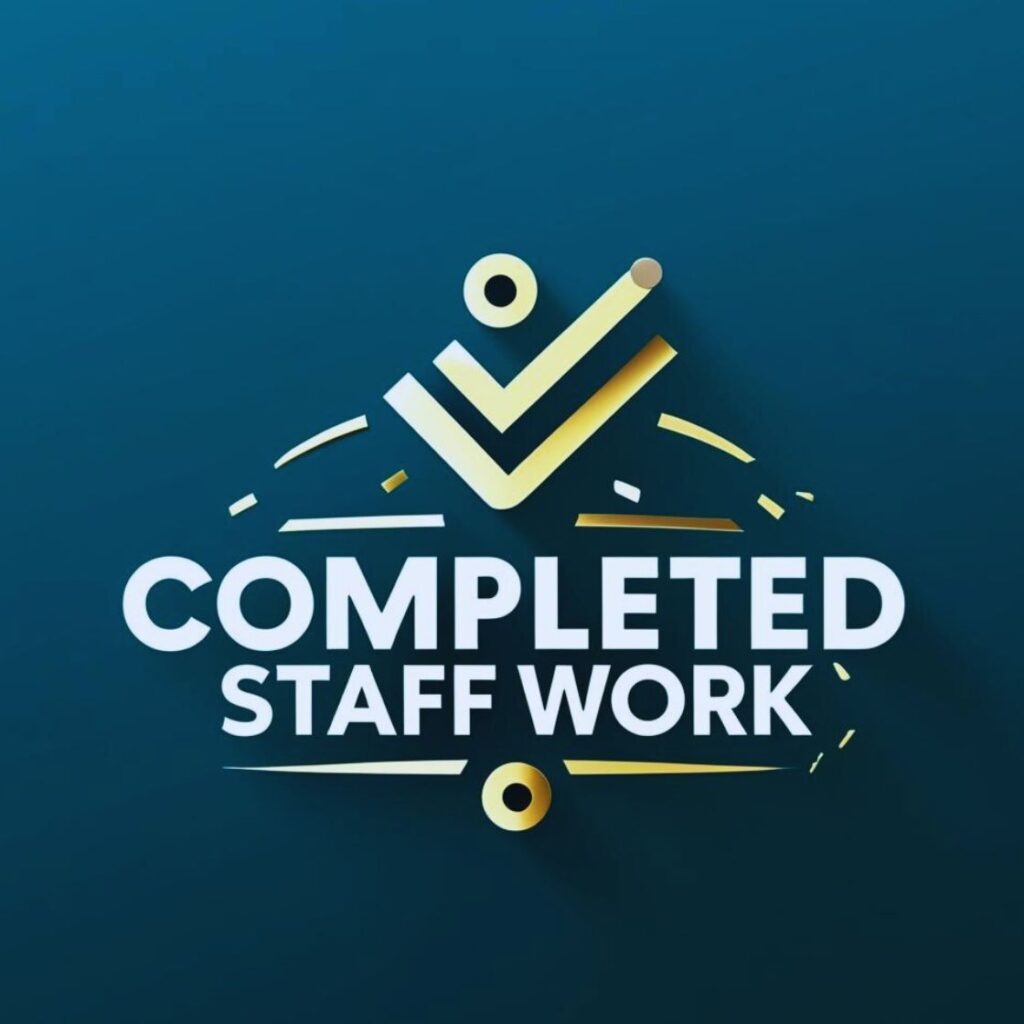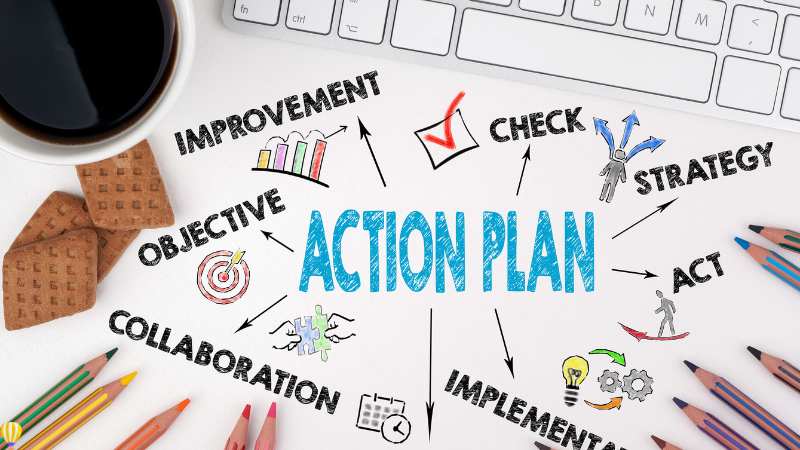Develop supervisors, and you develop your organization. It’s that simple, yet often overlooked.
Today, the role of a supervisor transcends traditional boundaries. They’re not just overseeing work; they’re mentors, motivators, and the bridge between management’s vision and the team’s reality.
But what happens when we forget to equip these crucial players with the tools they need? The impact is more than just a hiccup in operations; it’s a ripple effect that can dampen morale, reduce productivity, and ultimately hinder the organization’s growth.
We’re diving into 10 straightforward yet powerful ways to develop supervisors. This article is a practical guide to turning your supervisors into true leaders. Because when they grow, everyone grows.
Why Develop Supervisors
Supervisors are the linchpins of your organization. They stand at the crossroads between upper management’s strategies and the team’s execution.
Developing supervisors isn’t just an investment in one person; it’s about uplifting the entire team and, by extension, the organization.
Supervisors are the main line of communication between the workforce and the higher-ups. When they’re well-developed, information flows smoothly, misunderstandings are reduced, and the organization operates more cohesively.
A skilled supervisor can boost team morale and engagement. They understand their team’s dynamics, recognize efforts, and address concerns, creating a positive work environment that fosters productivity.
Developed supervisors make informed decisions that align with the organization’s goals. They understand the big picture and manage day-to-day activities in a way that propels the organization forward.
They’re on the front lines, dealing with challenges as they arise. The better equipped they are, the more effectively they can solve problems, turning potential obstacles into opportunities for growth.
Supervisors play a critical role in identifying and nurturing talent. By developing their ability to mentor and coach, you’re indirectly investing in the entire team’s development.
The Downside of Neglect
Ignoring the development of supervisors can lead to a host of issues. Miscommunication may become rampant, employee dissatisfaction can increase, and productivity can plummet.
In the long run, this neglect can lead to higher turnover rates, increased training costs, and a stagnant organizational culture.
Supervisors are the heartbeat of your organization. By investing in their growth, you’re ensure a healthier, more vibrant, and more productive environment for everyone.
As your supervisors grow, so does the success of your entire team.
Ways to Develop Supervisors
Now, let’s roll up our sleeves and dive into the ten ways to develop supervisors. Applying these isn’t just checking boxes; it’s about sparking a transformation that benefits your entire company.
Training Programs
This isn’t about mundane, by-the-book training sessions. It’s about dynamic, engaging programs that ignite a supervisor’s potential. These are tailored training sessions that cover everything from technical skills to leadership development.
Think interactive workshops, online courses, and real-world scenarios.
This isn’t just about ticking off training hours. It’s about giving supervisors the tools they need to succeed. When they learn more, they can do more – for themselves, their team, and the company.
Implement a mix of in-person and digital training tailored to your supervisors’ needs. Make it ongoing, not a one-off event. Regular training keeps supervisors sharp, adaptable, and ready for whatever comes their way.
Mentorship and Coaching
This is about pairing supervisors with experienced mentors or coaches within the organization. These relationships provide one-on-one guidance, personalized advice, and a safe space for supervisors to discuss challenges and goals.
Mentorship goes beyond the basics of training. It’s about growth through relationships. A mentor or coach can offer insights and advice that are deeply relevant to the supervisor’s daily challenges. This personal touch can make all the difference.
Start by identifying potential mentors within your organization who have the experience and the communication skills to guide others. Then, create a structured mentorship program where supervisors are matched with these mentors. Encourage regular meetings and set clear objectives for what both parties hope to achieve.
The beauty of mentorship and coaching lies in its ability to provide tailored guidance and support. It’s not just about learning skills; it’s about understanding how to navigate the complexities of leadership in a real-world context.
Feedback Mechanisms
This involves creating systems where supervisors can receive regular, constructive feedback from their peers, subordinates, and superiors.
It’s not just about annual reviews; it’s a continuous process that encourages open dialogue and ongoing improvement.
Feedback is the breakfast of champions. By receiving honest, constructive feedback, supervisors can pinpoint areas for improvement, understand how their actions impact others, and adjust their approach accordingly. It’s about building a culture of transparency and continuous learning.
Implement a 360-degree feedback system where supervisors can gather insights from all levels within the organization. Encourage a culture where feedback is seen as a gift, not a criticism.
Make sure this feedback is actionable, specific, and delivered in a supportive way. It’s not about pointing fingers; it’s about growth and improvement.
Effective feedback mechanisms are a two-way street. Supervisors should not only receive feedback but also learn how to give it. This fosters a culture of open communication and mutual respect, where everyone is committed to collective improvement.
Transformative Feedback: A Workshop for Supervisors
Leadership Workshops
Leadership workshops are specialized training sessions designed to sharpen the essential skills of a leader. These workshops cover topics like effective communication, team motivation, conflict resolution, and strategic thinking.
Supervisors are more than just managers; they are leaders. These workshops are crucial because they go beyond the technicalities of a job. They touch on the human side of management – inspiring teams, handling difficult conversations, and leading by example.
Organize regular leadership workshops led by experienced professionals. These could be in-house or external experts. Ensure these workshops are interactive, allowing supervisors to role-play scenarios, discuss real challenges they face, and share experiences with peers.
It’s about learning in a collaborative environment where supervisors can openly discuss and develop their leadership style.
Leadership workshops are not just about imparting knowledge; they are about transforming supervisors into leaders who can inspire and guide their teams to success.
They create a space for supervisors to explore and refine their leadership capabilities, ultimately benefiting the entire organization.
Performance Evaluations
Performance evaluations in this context aren’t just annual review rituals. They’re ongoing, dynamic assessments tailored to help supervisors understand their strengths and areas for improvement.
These evaluations should be comprehensive, covering not just their tasks, but also how they lead, communicate, and influence their team.
Regular performance evaluations are crucial. They provide supervisors with clear, measurable insights into their work. It’s about showing them where they excel and where they can grow.
This ongoing process keeps supervisors aligned with organizational goals and personal development targets.
Develop a performance evaluation system that is frequent, fair, and constructive. Ensure it includes self-assessments, peer reviews, and managerial feedback. Make these evaluations more than just a scorecard; use them as a tool for meaningful conversations about career growth and skill development.
And remember, feedback should always be paired with resources and support to help supervisors improve.
Performance evaluations are a mirror for supervisors. They reflect not just what they’ve done, but how they’ve done it.
Done right, these evaluations can be powerful catalysts for personal and professional growth, benefiting the supervisor, their team, and the entire organization.
Empowerment Strategies
Empowerment Strategies involve giving supervisors more autonomy and authority in their roles. This means entrusting them with decision-making power, encouraging them to take initiatives, and supporting their choices.
Move away from micromanagement. Foster a culture where supervisors feel confident to lead their teams independently.
When supervisors are empowered, they feel more invested in their roles. This autonomy boosts their confidence, encourages creative problem-solving, and fosters a sense of ownership over their work.
Empowered supervisors are more motivated and effective, leading to better team performance and overall organizational success.
Start by defining clear boundaries within which supervisors can make decisions. Provide them with the necessary resources and support to execute their ideas. Encourage senior management to trust their judgments and avoid overruling their decisions unless necessary.
Regularly review their progress and celebrate their successes, reinforcing their empowerment.
Empowering supervisors isn’t just about giving them freedom; it’s about creating an environment where they can thrive as leaders.
This approach helps in building a resilient and adaptable leadership layer within the organization, crucial for navigating the complexities of today’s business landscape.
Communication Skills Development
This is about enhancing the communication abilities of supervisors. It involves training them in clear, effective communication, both in speaking and listening. This includes how to give constructive feedback, how to conduct productive meetings, and how to communicate across different levels of the organization.
Effective communication is the backbone of good leadership. It’s not just about transmitting information; it’s about ensuring understanding, building trust, and fostering an open, collaborative environment.
Supervisors who communicate well can more effectively lead their teams, manage conflicts, and align their team’s efforts with organizational goals.
Organize training sessions and workshops focused on communication skills. Include practical exercises like role-playing, public speaking, and active listening.
Encourage supervisors to practice these skills in their daily interactions and provide platforms for them to give and receive feedback on their communication style.
Developing strong communication skills in supervisors leads to a more harmonious, efficient, and effective workplace. It enables supervisors to convey their vision, align their team’s efforts, and foster a positive, inclusive work culture.
Team Building Activities
Team building activities are structured events or exercises aimed at enhancing teamwork and collaboration. These can range from problem-solving tasks to group discussions and outdoor bonding activities.
The goal is to foster better understanding and cooperation among team members, including the supervisor.
Team building is vital. It breaks down barriers, builds trust, and encourages collaboration. For supervisors, participating in and facilitating these activities helps them understand their team dynamics, identify strengths and weaknesses, and create a stronger, more united team.
Organize regular team-building exercises that are both fun and meaningful. These activities should encourage teamwork, communication, and mutual respect. Involve supervisors in the planning process and encourage them to take the lead.
This not only strengthens the team but also helps supervisors develop their leadership and facilitation skills.
Effective team building leads to a more cohesive, efficient, and motivated team. It allows supervisors to better understand their team members, which in turn helps in tailoring their leadership approach to each individual’s needs.
Conflict Resolution Training
This involves training supervisors in handling and resolving conflicts within their teams. The training should cover identifying the root causes of conflict, effective communication strategies to address issues, and techniques for mediating disputes.
Conflict in the workplace is inevitable. However, how it’s managed can make a world of difference. Proper conflict resolution skills are essential for maintaining a harmonious work environment.
They enable supervisors to address issues constructively, preventing them from escalating and affecting team morale and productivity.
Implement regular training sessions on conflict resolution. These should include case studies, role-playing exercises, and discussions on real-life scenarios. Encourage supervisors to apply these skills in their daily interactions and provide support as they navigate complex situations.
It’s also important to create a culture where open and honest communication is encouraged, making it easier to address conflicts early on.
Equipping supervisors with conflict resolution skills is crucial for maintaining a positive, productive work environment.
It empowers them to handle challenging situations effectively, ensuring their team remains focused and cohesive.
Continuous Learning Opportunities
Continuous learning is about providing supervisors with ongoing opportunities to update and expand their skills and knowledge. This can be through workshops, seminars, online courses, or even cross-departmental experiences.
The idea is to keep learning and evolving in step with the changing business landscape.
The business world never stands still, and neither should supervisors. Continuous learning is vital to stay ahead of new trends, technologies, and methodologies. It keeps supervisors agile, informed, and ready to tackle new challenges.
This ongoing development not only benefits the individual but also brings fresh perspectives and ideas to the team and the organization.
Create a culture where learning is valued and encouraged. Allocate resources for training and professional development. Encourage supervisors to set personal learning goals and support them in achieving these.
Consider implementing a knowledge-sharing platform where supervisors can learn from each other’s experiences and insights.
By fostering continuous learning, you’re future-proofing your leadership. It ensures that your team leaders are not just coping with change but are proactive, forward-thinking individuals who can lead their teams through any challenge.
These ten ways to develop supervisors – from training programs to continuous learning opportunities – provide a comprehensive framework for nurturing effective, dynamic leaders.
Developing supervisors is an investment with far-reaching benefits.
The impact of this investment is profound. Empowered and skilled supervisors lead to more productive, engaged, and motivated teams.
They create a work environment where communication flows, conflicts are managed constructively, and innovation thrives.
This not only boosts the morale of the team but also significantly contributes to the organization’s overall success and resilience.



